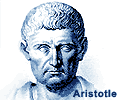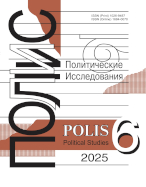The Vector of Russian 1917 Revolution:
Modernization or Counter-Modernization?
Rozov N.S.,
Dr. Sci. (Philos.), Professor, Principal Researcher, Institute of Philosophy and Law, Siberian Branch of Russian Academy of Sciences; Professor at the Department of International Relations and Regional Studies, Novosibirsk State Technical University, Novosibirsk, Russia , nrozov@gmail.com
elibrary_id: 72298 | ORCID: 0000-0003-2362-541X | RESEARCHER_ID: K-5447-2017
DOI: 10.17976/jpps/2017.02.02
Rozov N.S. The Vector of Russian 1917 Revolution: Modernization or Counter-Modernization? – Polis. Political Studies. 2017. No. 2. https://doi.org/10.17976/jpps/2017.02.02
Russian revolution in the broadest sense (from its prehistory in 1905-1907 to the Stalinist regime formation in the late 1920s) is considered in the context of several autonomous modernization processes (according to Randall Collins): secularization, growth of creative freedom in culture, bureaucratization, capitalist industrialization, and democratization. General links are formulated between these processes and revolutions in such aspects as the level of violence, the revolutionary success (change of power, significant concessions) or failure (when reaction wins), as well as the type of development trends of post-revolutionary regimes. True modernization usually leads to growth of economic, political and creative freedom, it strengthens a state in the aspects of resources, political and military power, prosperity and management. Russian revolutionary way was ambiguous. The Revolution led to one-sided modernization that later turned out to be counter-modernization. Initial progress after the February 1917 to democracy and collegial division of power led finally to Stalinism as one of the most brutal forms of totalitarianism. The “under-capitalist” industrialization and the Tzarist bureaucracy of the old regime were destroyed by the Revolution but then they both revived in forms of the “socialist” Stalinist industrialization and Soviet “nomenclature”. These processes have strengthened the totalitarian and aggressive state of USSR with its later triumph of the victory in 1945 and formation of a superpower with several socialist satellites. However, in the aspects of secularity, creative freedom and democracy the counter-modernization occurred which caused fragility of this state success, turbulence of further development, recent slip to deindustrialization in national economy, neopatrimonialism as a decay of state bureaucracy, growth of censorship and desecularization in culture.
References
Avreh A.Ya. Tsarism nakanune sverzheniya [Tzarism before Overthrow]. Moscow: Nauka. 1989. 256 p. (In Russ.)
Collins R. Macrohistory: Essays in Sociology of the Long Run. (Russ. ed.: Collins R. Makroistoriya: ocherki sotsiologii bol’shoi dlitel’nosti. Moscow: URSS. 2015. 499 p.)
Davidovich A.M. Samoderzhavie v epohu imperializma [Autocracy in the Epoch of Imperialism]. Moscow: Nauka. 1975. 351 p. (In Russ.)
Demin V.A. Gosudarstvennaya duma Rossii [The State Duma of Russia]. Moscow: ROSSPEN. 1996. 214 p. (In Russ.)
Goldin V.I. Soldaty na chuzhbine. Russkii Obshche-Voinskii Soyuz, Rossiya i Russkoe Zarubezh’e v XX‑XXI vekakh [Soldiers in a Foreign Land. Pan-Russian Military Union, Russia and the Russian Diaspora in 20th‑21st Centuries]. Arhangelsk: Solti. 2006. 796 p. (In Russ.)
Gosudarstvennaya Duma Rossii. 1906-2006. Entsiklopediya. Vol. 1. 1906-1917. [The State Duma of Russia. Encyclopedia. Vol. 1. 1906-2006]. Moscow: ROSSPEN. 2006. 768 p. (In Russ.)
Grinin L.E. Maltuziansko-Marksova lovushka i russkie revolyucii [Marx-Malthusian “Trap” and the Russian Revolution]. – Prichini Russkoy revolyucii [The Causes of the Russian Revolution]. Moscow: LKI. 2010. P. 198-224. (In Russ.)
Gudkov L.D. Osobennosti modernizacii v Rossii i harakter russkoy etnonacionalnoy identichnosti [Specifics of Modernization in Russia and the Nature of Russian Ethno-national Identity]. – Vibori v Rossiyskoy Federacii. Saint Petersburg: Norma. 2002. P. 69-71. (In Russ.)
Katkov G. Fevralskaya revolyuciya [The February Revolution]. Moscow: Russkiy put’. 1997. 419 p. (In Russ.)
Kolonickiy B. Reds vs. Reds. – Neva. 2010. No. 11. P. 144-164. (In Russ.)
Krasniy terror v gody Grazhdanskoy voyny. [The Red Terror during the Civil War.]. Ed. by Yu. Felshtinsky. Moscow: TERRA-Knizhniy klub. 2004. 512 p. (In Russ.)
Nefedov S.N. February 1917: Government, Society, Bread and the Revolution. – Uralskiy istoricheskiy vestnik. 2005. No. 10. P. 112-123. (In Russ.)
North D., Wallis J., Weingast B. Violence and Social Orders (Russ. ed.: North D., Wallis J., Weingast B. Nasilie i sotsial’nye poryadki. Moscow: Gaidar Institute Press. 2011. 479 p.)
Paperny V. Architecture in the Age of Stalin: Culture Two. (Russ. ed.: Paperny V. Kul’tura Dva. Moscow: New Literary Observer. 2016. 416 p.)
Pipes R. 2005. The Russian Revolution. (Russ. ed.: Pipes R. Russkaya revolyutsiya. Moscow: Zakharov. 2005.)
Pivovarov Yu.S. Irresistible Revolution. – Prognozi i strategii. 2009. No. 1. P. 216-223. (In Russ.)
Rozov N.S. Jointly Divided Power and the Conditions of Democracy in Russia in the Making Stage by Stage. – Polis. Political Studies. 2008. No. 5. P. 74-89. (In Russ.) URL: http://www.politstudies.ru/article/4037 (accessed 06.02.2017).
Rozov N.S. Koleya i pereval: makrosociologicheskie osnovaniya strategiy Rossii v 21 veke [Track and Pass: Macrosociological Foundations for Russian Strategies in the 21st Century]. Moscow: ROSSPEN. 2011. 735 p. (In Russ.)
Rozov N.S. Dinamika rascvetov i raspadov obschestv: na puti k ohvativayuschey paradigme [Dynamics of Rise and Decay of Societies: Towards an Embracing Paradigm]. – Obshchestvennyye nauki i sovremennost’. 2016. No. 4. P. 146-158. (In Russ.)
Shacillo K.F. Gosudarstvo i monopolii v voennoy promishlennosti Rossii (konec 19 veka – 1914) [The State and the Monopoly in the Military Industry of Russia (the End of 19th Century – 1914)]. Moscow: Nauka. 1992. 270 p. (In Russ.)
Sokolov A.V. Gosudarstvo i Pravoslavnaya cerkov v Rossii, fevral’ 1917 - yanvar 1918. [State and the Orthodox Church in Russia, February 1917 – January 1918]. Saint Petersburg. 2014. (In Russ.)
Tilly Ch. Creation of Russia. – Prognozis. 2006. No. 3(7). P. 168-210.
See also:
Pantin I.K.,
Russian revolution as a problem of political philosophy. – Polis. Political Studies. 2011. No5
Rozov N.S.,
Randall Collins’ theories of historical dynamics and context of russian politics. – Polis. Political Studies. 2012. No6
Rozov N.S.,
Crisis and Revolutions: Fields of Interaction, Actors’ Strategies, and Trajectories of Conflict Dynamics. – Polis. Political Studies. 2017. No6
Linetsky A.I.,
Modernization of Traditional Societies: A Way to Prosperity or a Road to Nowhere?. – Polis. Political Studies. 2017. No4
Pastukhov V.B.,
Ukrainian revolution and Russian counter-revolution. – Polis. Political Studies. 2010. No5




.jpg)






 print
print
.jpg)
.jpg)